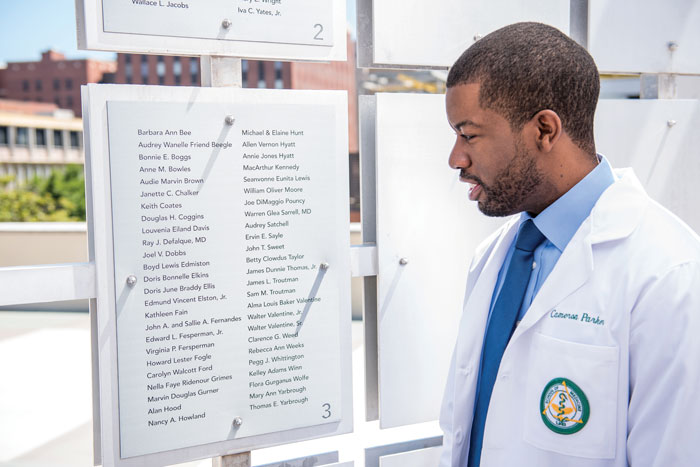 Before she was diagnosed with gastroesophageal cancer, Birmingham psychiatrist Renée Holloway, M.D., knew she wanted to donate her body to medicine. Her parents donated their bodies to the University of South Alabama College of Medicine. Holloway donated her body to the UAB Anatomical Donor Program because she worked in Birmingham and had ties to the UAB School of Medicine.
Before she was diagnosed with gastroesophageal cancer, Birmingham psychiatrist Renée Holloway, M.D., knew she wanted to donate her body to medicine. Her parents donated their bodies to the University of South Alabama College of Medicine. Holloway donated her body to the UAB Anatomical Donor Program because she worked in Birmingham and had ties to the UAB School of Medicine.
“She was a good Samaritan,” says Michele Nichols, M.D., Holloway’s sister and a professor in the UAB Department of Pediatrics. “She wanted to help others in the future by helping them learn.”
Holloway, 62, died Feb. 21, 2018, after a two-year battle with cancer. Dr. Holloway, along with many others, gave medical, nursing, dentistry, and optometry students; health professions students; and undergraduate biology students at UAB the opportunity to learn from her.
Laura Fraser, Ph.D., director of the Anatomical Donor Program (ADP) and associate professor in the UAB Department of Cell, Developmental, and Integrative Biology, notes some medical schools are replacing donor bodies with computer imaging to cut costs, but she says she believes those technologies can’t compare with the hands-on learning a donor body allows. “There’s no replacement for our students to learn from that tactile experience,” she says.
Isabella Mak, a rising MS2, agrees with Fraser’s assessment. “As we discovered every scar, every bruise, and every pathological state, we wondered where they came from, recalled knowledge we learned from our professors, and understood anatomy the way textbooks could not parallel,” Mak says. “Now, I appreciate the individuality and complexity of our bodies and how everything is interconnected.”
 A UAB medical student reads the names of total willed body donors inscribed on a sculpture honoring
A UAB medical student reads the names of total willed body donors inscribed on a sculpture honoring
those donors at Volker Hall Plaza.
The ADP is a willed-body program, meaning a donor has to indicate they want their body donated and the donor’s family must consent to have the body sent to UAB within eight to 10 hours of the donor’s death. This leaves no time or opportunity for a funeral.
To help remedy that, Fraser and the students whose training benefits from the ADP host an annual Service of Gratitude event every April. The ceremony serves as a way for students to thank the donors’ families and for the families to gain some closure. “In a sense, it is a way to thank them for entrusting their loved ones to us,” Fraser notes.
Sean Bowman, a rising MS2, says the service is a powerful experience. “I found myself focusing on watching the families. There were tears, laughter, and smiles as they remembered the blessings their loved ones brought to them.”
At the service, Bowman and others also shared their musical talents. He and fellow medical student Paris Malensek performed a moving rendition of Leonard Cohen’s “Hallelujah” on the cello and ukulele, respectively. Bowman also performed Phillipe Rombi’s “Ave Maria” on the cello. Mak read an original poem titled “Donor’s Gift” in honor of ADP donors and their families.
Nichols and her family attended the service this year in honor of her sister. Nichols says she could tell the students were very grateful for the opportunity to learn from a human body.
“At first, I thought the Service of Gratitude event was going to be really sad, but it was a pretty amazing thing to hear over 100 names called with all the families around,” Nichols says. “It clearly meant a lot to them.”
By Ryan Broussard